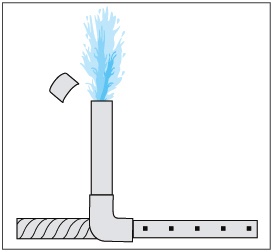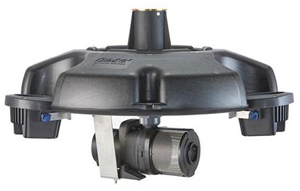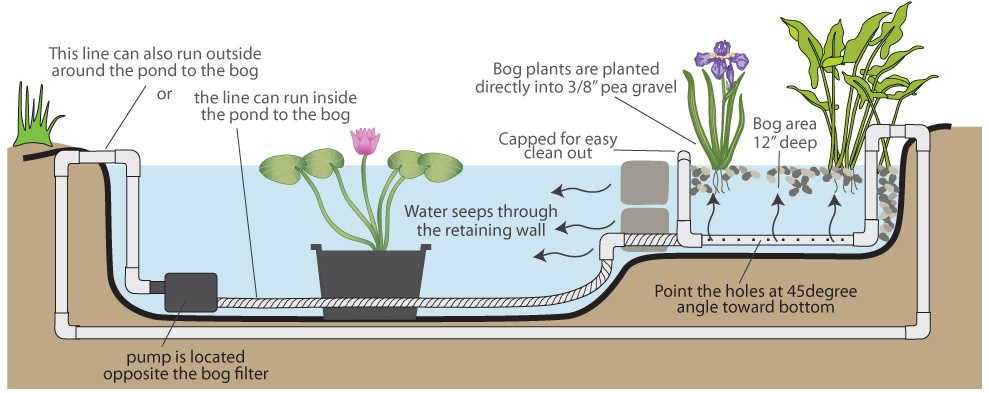28. Bog Gardens and Bog Filters
Tennessee Water Gardens is happy to include this description of a bog garden and bog filters, courtesy of Nelson’s Water Gardens from a presentation they gave us at the National Association of Pond Professionals. For years we have been incorporating bog gardens in pond configurations because of the benefits they provide. This is a great solution to many problems. Bog gardens help enhance any filtration system and reduce the maintenance required for a clear water experience. We were excited to see other fine companies taking this to the next level. Introducing this concept to your water garden with better materials will improve the biological health of your pond and mean less work for you. If a gravel bog filter had a mission statement, this is what it would be: Starving the always-present algae in the pond, while maintaining the beauty of the garden, creates an environment that maximizes organic decomposition and nutrient absorption.


How to Create Bog Gardens

- Follow the usual directions for building a liner pond. Size is determined by pond surface: 10- 30% of the pond surface should make up bog gardens. See Pond Solution 4 to calculate liner size. If you plan to stock a lot of fish or koi, go with a larger size. See Pond Solution 16 for information about adding fish and scavengers.
- Use cinder block, stone, bricks, or any other stable building material to construct a dry wall (no mortar used) to section off the bog filter from the rest of the pond. We recommend using cinder blocks (painted black with exterior latex paint) then “capping off” the blocks with a decorative stone of your choice.
- The illustration above shows burying the pipe line from the pump to the filter. However, you may choose to lay flexible pipe in the bottom of the pond. Just run the tubing through the lower portion of the wall connecting the pump to the distribution pipes in the bog filter. Put a PVC female adapter fitted with the appropriate sized hose barb fitting to receive the flex hose from your pump.
Install the pump on the opposite side of the pond from where the bog filter is located. This is to facilitate good circulation of water throughout the pond. Select a pump that will turn the volume of the pond over every 1-3 hours. (You can go with a higher flow rate if you wish.) - Next, drill the distribution pipe. The outlet of the pump determines the size of the pipes. Minimum pipe size is 1” diameter. The pipe is drilled with 1/4” holes at a 45 degree angle facing down, spaced approximately 6” apart. The spacing of the drilled holes is an estimate, if there is a long run of pipe; space the holes further apart. An alternative to this is making slots in the pipe.
- Attach a vertical capped stand pipe to the pipe matrix under the gravel. Cut this pipe (now referred to as the “clean out pipe”) to discreetly rise just above the gravel bed. Spray paint the cap black or brown and it will “disappear” from view.*
- Next lay the distribution pipe on top of the pond liner in the area partitioned off for the bog filter. Be sure to point the holes at a 45 degree angle toward the bottom. Gravel bogs that are 2-3 feet in width can be fed by a single line of pipe. Wider areas require additional lines spaced 2’-3’ apart. This layout is similar to setting up a septic drain field.
- Cap the ends of the distribution and clean out pipes.
- Once you are satisfied with your piping layout and location of the clean out pipe(s), glue all parts together.
- Shovel 3/8” pea gravel into the Bog Filter area but only fill halfway (the rest of the gravel will be added during the planting). Most gravel is not very clean, wash it as best you can before adding to the filter but be aware it will muddy up the pond, do not to worry, it will clear up. After all, that’s what the filter is designed to do! The construction process is finished, now it’s time to plant your bog.

* The under gravel pipes can be cleaned out by simply removing the cap from the stand pipe; water pressure from the pump will help dislodge any debris that has collected in the pipes. A reverse flow can be achieved by turning off the pump and putting a pressure washer down the stand pipe.

Pressure filters, aeration systems, and surface skimmers are great for the lower pond, and require less cleaning when used with a bog.

• Ideal for supplying higher elevated waterfalls
• Cleaning and backlash function can be easily operated without removing the cover
• Easy monitoring of the UVC, filter performance
• Supplied with all hose connections for the fast and trouble free installation
• High quality, impact resistant material
OA136 BioPress 1000 – suitable for ponds up to 1,000 gallons
OA137 BioPress 1600 – suitable for ponds up to 1,600 gallons
OA138 BioPress 2400 suitable for ponds up to 2,400 gallons

Every pond benefits from added aeration. It increases oxygen, helps stir up debris so it can reach skimmers and reduces algae growth. In addition, the bubbles look great. With a pond light added to them, they are extravagant at night. Floating style units like the Oase Floating Fountains are for larger and natural ponds.
OASE PondJet Floating Fountain

The SwimSkim surface skimmer will do the hard work for you! It offers strong suction, does not require a separate pump and is ideal for retrofitting. Its powerful suction cleans a pond surface (coverage up to 270 square ft.). The SwimSkim floats along the surface of your pond, removing large debris. It is easy to use – just plug it in and drop it in your pond. It automatically adapts to any water level (from a 16 inch water depth). The integrated aerator oxygenates your pond. Because the SwimSkim does not require a separate pump, it’s compact design makes it ideal for retrofitting and allows for flexibility when water level fluctuates.
SwimSkim Pond Surface Skimmer

Installing a Gravel Bog Filter for Bog Gardens

A Gravel Bog Filter can be constructed in a number of ways:
- Partition: The filter is within the pond separated by a porous retaining wall;
- Raised: The filter is built next to and higher than the pond; water flows back via a stream or waterfall;
- Border: A ledge 12” deep and as wide as it needs to be is constructed around the perimeter of the pond. At the edge of the ledge a porous wall is built to retain the gravel;
- Island: Created by building a porous retaining wall on all sides in the middle of the pond.
Things to consider before you begin:
• Don’t make the bog too small: For water gardens 10 – 15% of surface area should be bog, and for koi ponds there should be 20 – 30%.
• Avoid too deep a bed of gravel – this is the most common mistake made. You need no more than 12” of gravel substrate. If you are adding a Gravel Bog to an existing deep pond area; you can construct a false bottom using grating.
• Use the correct size gravel – use 3/8” pea gravel.
• Use enough plants- initially you should plant one plant per foot.
• Choose the correct plants – there are many aggressive species which can over grow your bog.
• Keep the original soil around the roots when adding plants to a new bog garden. There is not enough nutrition in a new bog to sustain new transplants. Just knock the pot off the plant and plant it soil, roots and all directly into the gravel. The “old” soil will not “contaminate” the bog.
• Remove the plants from their pots; pots severely limit the plant’s ability to absorb nutrients and defeats the purpose of the gravel bog filter.

Planting the Bog Filter
Do not mix too many different plants in bog- Plan it out for the proper look. You need high growing and shorter fast growing ground cover. Trap door snails are great as added balance.
1. Select your bog plants and arrange them in the bog area that is half filled with gravel. Be sure you stay away from the plants in the middle list. It’s best to plant the tall plants towards the back of the filter, and lower growing plants in front. Create interest by contrasting plants with different foliage colors or textures.
2. After you have arranged the plants to your satisfaction knock the pots off the plants and place the plant with the root ball intact with soil. Do not remove the soil—there is not enough nutrition in a brand new bog to sustain the plants. (Trust us the soil will not wash into your pond.)
3. After the plants have been placed, gently shovel in the remaining gravel. Your goal is to place the plants at the appropriate level so that when the rest of the gravel is added the gravel level will be above the water level. In other words, no standing water in the gravel filter area.
4. Turn on your pump and your bog filter is now off and running with years of clear water enjoyment to come.
An extensive list of plants recommended for bog gardens and plantings is below:
| Yellow Iris Iris versacolor Iris virginica Thalia dealbata Louisiana iris – warmer climates Umbrella Palm All Cannas Pickerel Rush Arrowhead Dwarf Horsetail Ruby Creeper Assorted Taros Dwarf Papyrus Ruby Eye Arrowhead Blue Carex Dwarf Variegated Sweetflag Sensitive Plant | Blue Rush Japanese Iris Siberian Iris Bog Lily Lizard’s Tail Spider Lily Star Grass Chinese Water Chestnut Melon Sword Variegated Spider Lily Corkscrew Rush Red Stemmed Sagittaria Variegated Water Celery Creeping Jenny Ribbon Grass | Gold Rush Reed Pennywort – warmer climates Taro Variegated Water Celery Parrots Feather Dwarf Red Stem Parrots Feather Giant Sensitive Plant – not hardy Lotus Water Hyacinth better in header pond Aquatic Mint Horsetail Red Stemmed Thalia Chameleon Plant Mediterranean Reed Chocolate Mint Parrot’s Feather Astilbe | Leopard Plant Bergenia Day Lilies Meadow Rue Bishops Weed Forget Me Not Obedient Plant Butterfly Gingers Fox Glove Polygonums Butterfly Weed Ground Orchids Society Garlic Caladiums Hibiscus (not Chinese) Calla Lily |
Discarding fast growing bog plants is key to a working bog. Do not hesitate to harvest the bog and thin it out periodically. This removes even more nutrients and will keep the filter efficient. Doing maintenance or having your pond professional do the 3 times a year will ensure your bog lasts up to 10 years without major cleaning.
Weekly use of high quality sludge remover, like AquaLife Water Garden Cleaner_ASF, will enhance your bog garden as well as keep it and your lower pond cleaner.
